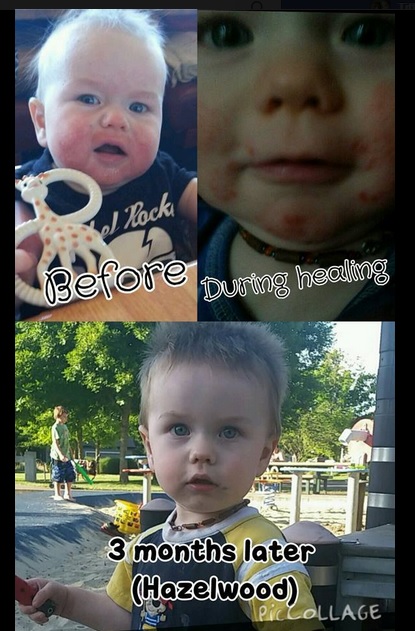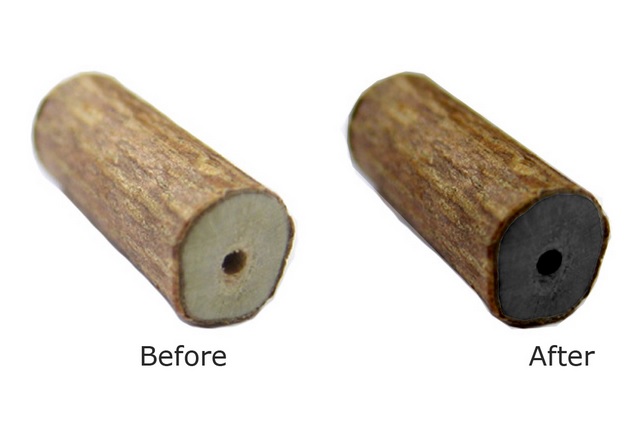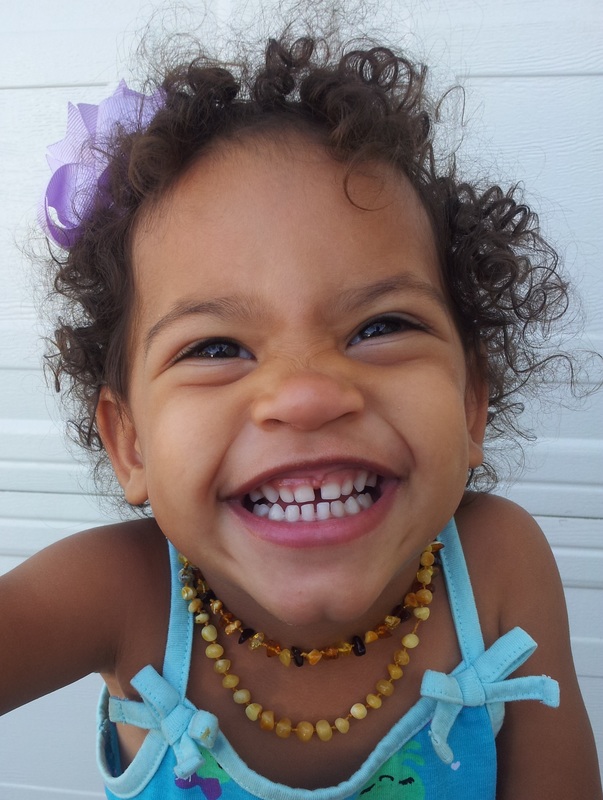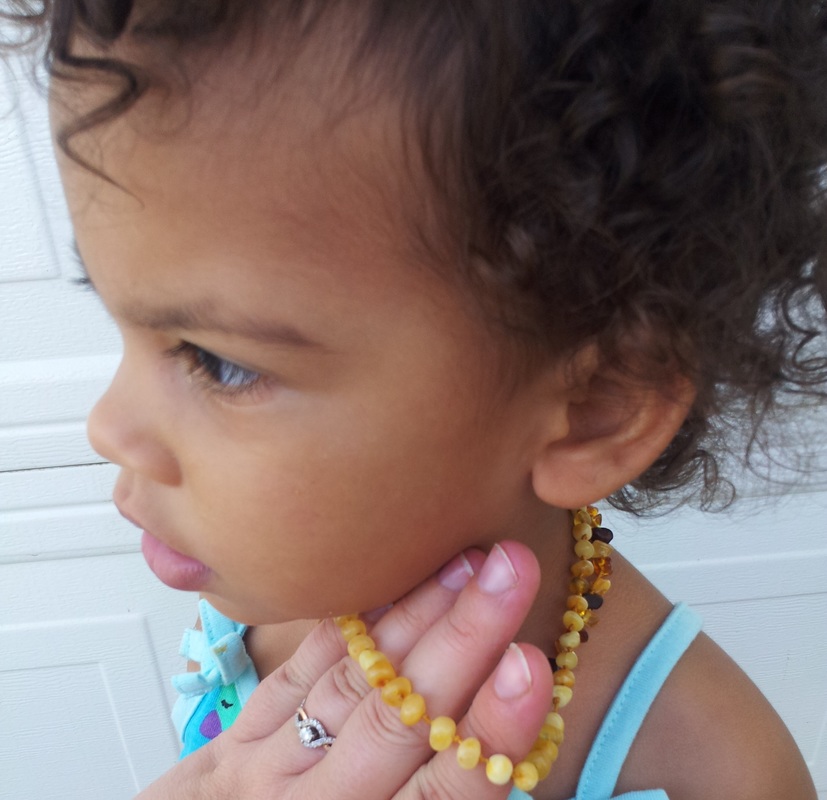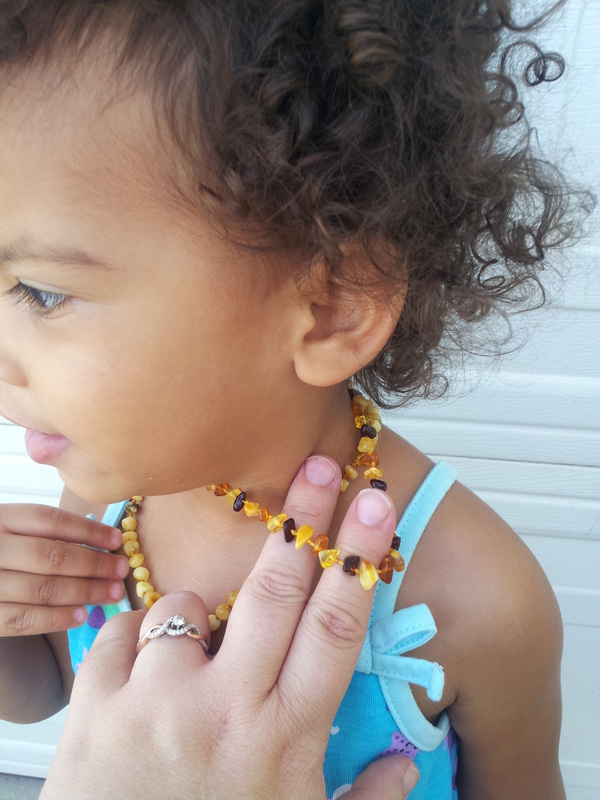|
Q: What does Hazelwood help with?
A: It helps with eczema, acid reflux, heart burn, nausea, arthritis, skin problems, teething and so much more. Research shows that hazelwood is rich in active compounds which have antioxidant and anti-inflammatory properties. It has also bee documented that an infusion of the branches and leaves has been used in the treatment of heart complaints and intestinal disorders. |
Q: What is Hazelwood?
A: Hazelwood is made from the branches of Corylus cornuta, a widespread indigenous bush that grows throughout many regions of Canada. Harvesting the twigs doesn't affect the vitality of the bush, which grows back continuously after pruning.
Q: How does Hazelwood work?
A: Hazelwood has long been valued for its natural alkalizing and therapeutic properties. When worn against the skin, Hazelwood absorbs the acid in your body and creates a balanced PH.
Q: Does it have to be replaced?
A: Unlike Baltic amber,hazelwood does have to be replaced. Once your hazelwood necklace has absorbed all the acid in the body that it can it will need to be replaced. Usually most hazelwood will last 3-6 months before it will need to be replaced again.
Q: How do I know when to replace it?
A: Once your hazelwood has absorbed all the acid it can hold the inside meat of the bead will turn a dark grey color. If your bark starts to change or peel this is not an indication to replace it, normal wear is expected and does not effect the hazelwoods healing ability. Here is a photo to help you visualize what your hazelwood might look like when it need to be replaced. If symptoms start to return replace your hazelwood.
A: Hazelwood is made from the branches of Corylus cornuta, a widespread indigenous bush that grows throughout many regions of Canada. Harvesting the twigs doesn't affect the vitality of the bush, which grows back continuously after pruning.
Q: How does Hazelwood work?
A: Hazelwood has long been valued for its natural alkalizing and therapeutic properties. When worn against the skin, Hazelwood absorbs the acid in your body and creates a balanced PH.
Q: Does it have to be replaced?
A: Unlike Baltic amber,hazelwood does have to be replaced. Once your hazelwood necklace has absorbed all the acid in the body that it can it will need to be replaced. Usually most hazelwood will last 3-6 months before it will need to be replaced again.
Q: How do I know when to replace it?
A: Once your hazelwood has absorbed all the acid it can hold the inside meat of the bead will turn a dark grey color. If your bark starts to change or peel this is not an indication to replace it, normal wear is expected and does not effect the hazelwoods healing ability. Here is a photo to help you visualize what your hazelwood might look like when it need to be replaced. If symptoms start to return replace your hazelwood.
Q: Is it safe?
A: As a safety feature there is a knot before and after each bead, so that even in the extremely unlikely event the string becomes torn, the beads will not scatter. Our necklaces are secured with a traditional screw clasp or a pop out clasp, not a hook and ring and not a magnetic clasp. The screw clasps are made to break away from the strand at the clasp, this is a safety feature to prevent strangulation.
This does not mean your necklace has broke it means that the safety feature has been activated, but it will need to be repaired before use again or replaced. Our pop out clasps will simply pop out at the clasp leaving your necklace fully intact, and no need for repair, just simply pop it back together again and again. At this time I do not perform repairs for necklaces whose safety feature has been activated. However, I do know a friend in the business that could repair the jewelry for you. If you would like her information please contact me and send me a picture of your broken clasp and I can get you a price break down for repairs. As with all things, please don’t leave children unattended with their amber necklace or bracelet on due to possibility of choking hazard and strangulation.
Q:When did the use of hazelwood start?
A: Aboriginals are believed to be the first to have discovered that they could put hazelwood chips on their babies' necks to soothe teething pains. This lost art was revived in the late eighties by a few families in Quebec who rediscovered the unique properties of hazelwood. Since then hazelwood jewelry has become more available as a healing "herb" and has grown in popularity due to its positive effects on the wearers of hazelwood.. Up until recently hazelwood jewelry was still largely limited to Quebec and Canada.
Q: What do you recommend? A hazelwood necklace or a bracelet?
A: If you must make a choice between the two, we recommend wearing the necklace, the reason being that there are more hazelwood beads on the necklaces. The more hazelwood that is in contact with your skin, the better the results you will have. Having said that, many people still get great results from using a bracelet or anklet. Hazelwood can be worn anywhere on the body, but amber is best when used closes to the area of pain.
Q: The wood on my necklace is peeling off, is that normal?
A: Yes it is normal. The wood used is in it's natural form and is untreated in any way, it is normal for it to change over time which may include some peeling of the bark. Rest assured that this does not affect its ability to absorb acid in any way.
A: As a safety feature there is a knot before and after each bead, so that even in the extremely unlikely event the string becomes torn, the beads will not scatter. Our necklaces are secured with a traditional screw clasp or a pop out clasp, not a hook and ring and not a magnetic clasp. The screw clasps are made to break away from the strand at the clasp, this is a safety feature to prevent strangulation.
This does not mean your necklace has broke it means that the safety feature has been activated, but it will need to be repaired before use again or replaced. Our pop out clasps will simply pop out at the clasp leaving your necklace fully intact, and no need for repair, just simply pop it back together again and again. At this time I do not perform repairs for necklaces whose safety feature has been activated. However, I do know a friend in the business that could repair the jewelry for you. If you would like her information please contact me and send me a picture of your broken clasp and I can get you a price break down for repairs. As with all things, please don’t leave children unattended with their amber necklace or bracelet on due to possibility of choking hazard and strangulation.
Q:When did the use of hazelwood start?
A: Aboriginals are believed to be the first to have discovered that they could put hazelwood chips on their babies' necks to soothe teething pains. This lost art was revived in the late eighties by a few families in Quebec who rediscovered the unique properties of hazelwood. Since then hazelwood jewelry has become more available as a healing "herb" and has grown in popularity due to its positive effects on the wearers of hazelwood.. Up until recently hazelwood jewelry was still largely limited to Quebec and Canada.
Q: What do you recommend? A hazelwood necklace or a bracelet?
A: If you must make a choice between the two, we recommend wearing the necklace, the reason being that there are more hazelwood beads on the necklaces. The more hazelwood that is in contact with your skin, the better the results you will have. Having said that, many people still get great results from using a bracelet or anklet. Hazelwood can be worn anywhere on the body, but amber is best when used closes to the area of pain.
Q: The wood on my necklace is peeling off, is that normal?
A: Yes it is normal. The wood used is in it's natural form and is untreated in any way, it is normal for it to change over time which may include some peeling of the bark. Rest assured that this does not affect its ability to absorb acid in any way.
Q: What size should I buy?
A: These necklaces are not made to chew on, so when purchasing for children under the age of 3 years old, please make sure to use the information to make sure you have a proper fitting necklace. Our necklaces come in 11 inch and 13 inch sizes for children Get a string or another necklace that you have at home and use it to measure around your babies neck. When doing so you want to make sure the length is not long enough to roll over your child's chin and into their mouth. Also make sure that you have a width of 2 finger spaces between the necklace and the child's neck to give enough length for comfort. The pictures below are of my 2 year old wearing an 11 inch necklace and a 13 inch necklace. The butterscotch colored necklace is NOT a proper fit and is too long because it can fit over her chin and I can fit 3 to 4 fingers between the necklace and her neck, the mixed Baltic amber necklace would be considered a proper as I can only fit 2 fingers between her necklace and her neck, and it won't fit over her chin so she can not put it in her mouth. A proper fit is important because amber is a brittle tree resin. Although it is completely harmless if swallowed, the beads can break off if your child bites down on them and if the bead breaks it could pose a possible choking hazard for little ones.
A: These necklaces are not made to chew on, so when purchasing for children under the age of 3 years old, please make sure to use the information to make sure you have a proper fitting necklace. Our necklaces come in 11 inch and 13 inch sizes for children Get a string or another necklace that you have at home and use it to measure around your babies neck. When doing so you want to make sure the length is not long enough to roll over your child's chin and into their mouth. Also make sure that you have a width of 2 finger spaces between the necklace and the child's neck to give enough length for comfort. The pictures below are of my 2 year old wearing an 11 inch necklace and a 13 inch necklace. The butterscotch colored necklace is NOT a proper fit and is too long because it can fit over her chin and I can fit 3 to 4 fingers between the necklace and her neck, the mixed Baltic amber necklace would be considered a proper as I can only fit 2 fingers between her necklace and her neck, and it won't fit over her chin so she can not put it in her mouth. A proper fit is important because amber is a brittle tree resin. Although it is completely harmless if swallowed, the beads can break off if your child bites down on them and if the bead breaks it could pose a possible choking hazard for little ones.
Care Instructions:
Remove before bath time or before any water activity. Try to keep your hazelwood dry at all times. Remove before applying sunscreen,lotions, perfumes, hairspray, and before going into the pool. Avoid all chemicals and body products to prevent build up and damage to your hazelwood and amber. Hazelwood will need to be replaced every 3-6 months or when symptoms return. Your hazelwood will become dark on the inside when it has absorbed all the acid that it can hold, as shown in the picture above.
Adorable Amber can not be held responsible for any misuse or harm that may come from improper use of our products. Please practice common sense when using Jewelry on children under the age of 3 years old. Never leave your child unattended with anything around their neck. These statements have not been approved by the FDA.
Adorable Amber can not be held responsible for any misuse or harm that may come from improper use of our products. Please practice common sense when using Jewelry on children under the age of 3 years old. Never leave your child unattended with anything around their neck. These statements have not been approved by the FDA.
Copyright ©2014 - Present year Adorable Amber™ All Rights Reserved Bakersfield, CA. 93307 All prices are listed in USD
